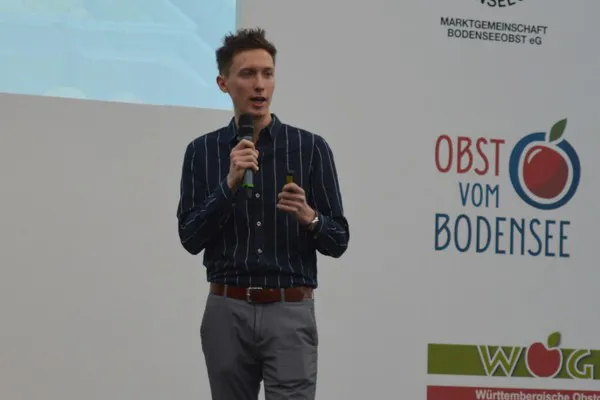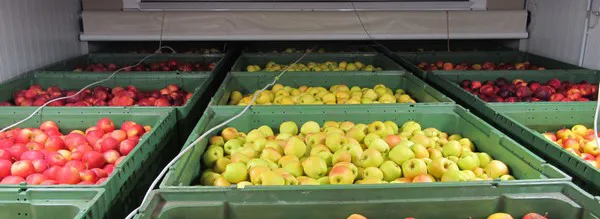The stipulations of the F-Gas Regulation bolster the use of alternative refrigerants CO2 (R744) with direct cooling and Propane (R290) with indirect cooling. These demands, coupled with the significantly rising energy costs, have major implications on the current and future choice of refrigerants and systems. The DyNatCool project aims to minimize resource use for construction and energy consumption for the operation of refrigeration systems in long-term apple storage, and to define the optimal cooling concept using alternative refrigerants. Long-term cold storage facilities, especially in the pome fruit sector, operate at partial load for a large portion of their operational hours. "The design of such often oversized refrigeration systems has been based on simplified linear calculations of the high thermal load during the short cooling phase. This not only leads to reduced efficiency but also to unstable climate conditions in terms of temperature and humidity," explained expert speaker Felix Büchele during a presentation at Fruchtwelt Bodensee 2024.
Identifying the thermal load and thus establishing a basis for the dimensioning of the storage was the first project goal. In close cooperation with partners (including CoolPlan and the Kratschmayer Group), the KOB is investigating the heat transfer from fruits and in large crates as a basis for calculating the transient thermal load during the cooling phase, the influence of the duration of the cooling phase on product quality based on product physiological studies, and the energy efficiency of future cooling systems that rely on natural refrigerants (CO2, Propane).
"The question is not how quickly a fruit can be cooled, but how quickly it must be cooled. If we design the system to increase efficiency, it ultimately means in practice that the cooling phase is extended accordingly. It is also important what impact this has on the final quality of the fruit. Because it's pointless to store energy-efficiently if we end up with a fruit that doesn't meet quality standards."

Felix Büchele during his presentation
The research partner ATB in Potsdam is addressing the influences of storage conditions (including heat transfer at the apple, air flow distribution in the large crate) on the quality of the apple. A wind tunnel is used for this purpose, in which many different scenarios can be played out. Moreover, in close collaboration with the engineering office Coolplan, a tool is being developed that takes various objectives into account.
Büchele: "It involves efficient cold room planning based on user specifications, such as total tonnage, crate fill quantity, etc. Another factor is the dynamic cooling load calculation and simulation taking into account real conditions and loads."

For the implementation of goals and validation, two experimental plants and a newly developed demonstrator tool for comparing apple storage between Propane and CO2 systems are used.
The project's goal is primarily to provide a basis for alternative storage and cooling systems, Büchele further emphasizes. "In fruit storage, there is the problem that the common refrigerants far exceed the permitted GWP value, which means that the current refrigerants will gradually disappear from the market. However, we lack concrete figures and data on energy efficiency, costs, and quality preservation of the respective 'new' refrigerants in fruit storage. This means that the user lacks a reasonable basis for making a decision on the alternative refrigerant."
According to Büchele, there is an urgent need for research. "Last season, we began testing both refrigerants, CO2 and Propane, in a system comparison under real conditions and similar room loading. Our primary concern is to gather concrete measurement data, such as performance, energy consumption, and refrigerant flow. Another parameter is indeed the preservation of quality, which is why we have equipped the fruits with a temperature sensor to validate the cooling curve and also analyze the fruit after the process for mass loss, fruit quality, and potential storage diseases."
Although the research partners do not yet have concrete research results, they have already come to some recommendations for the cooling concepts of tomorrow. "An extended cooling time leads to reduced room load and performance requirements as well as lower investments for the users. An additional benefit is the conservation of resources in the construction of the facility. The latter factor ultimately leads to optimal part-load behavior of the facility in long-term storage, an energy-efficient operation of the facility, and also contributes to the preservation of fruit quality," Büchele concludes.
For more information:
Felix Büchele
Lake Constance Fruit Growing Center (KOB)
[email protected]
https://www.kob-bavendorf.de/
